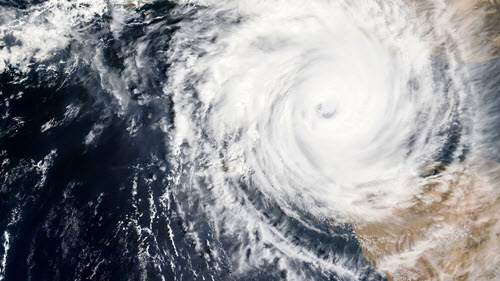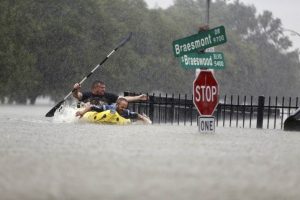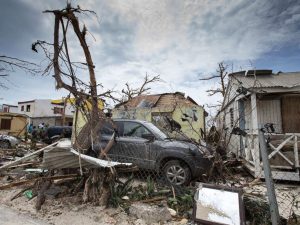In the Aftermath of Hurricanes Harvey and Irma
Opportunities for Valuation Pros
The widespread destruction left in the path of Hurricanes Harvey, Irma, and Maria provides ample ground and opportunities for CVA professionals to assist the public. In this article, the author, a CVA, details those opportunities.
[su_pullquote align=”right”]Resources:
Commercial Damages and Lost Profits
How Policy Language Impacts the Determination and Resolution of a Business Interruption Claim
[/su_pullquote]
The recent hurricanes in Texas and Florida left widespread destruction, insureds homeless, and others still waiting for claims to be settled by carriers. As of September 2017, it was estimated that Harvey caused approximately $65 billion in damage compared to Irma that left between $50 and $100 billion in damaged properties.  Over 300,000 vehicles were damaged in Texas and 250,000+ in Florida. Thousands of residential and commercial properties were damaged or destroyed in Texas and Florida.
By working as a claim’s examiner for an independent adjuster firm, valuable information was learned that identified opportunities for NACVA’s valuation professionals. Before discussing these opportunities, let’s review the parties involved. In most claims, the following professionals are involved with handling claims: insurance carrier, independent adjusting firms (IA), field adjusters (FA), staff adjusters (SA), public adjusters (PA), claim examiners, special investigative units (SIU), engineers, appraisers, umpires and forensic accountants, or other financial professionals.
In catastrophic storms, insurance carriers will have customer service representatives (or automated lines) as the first point of contact for insureds filing claims. After the claims are filed, the carrier assigns the claims to IA firms. The IA firm assigns the claim to the FA who is working a specific area. The FA schedules an appointment with the insured to complete an inspection at the loss location.  FAs are generally the person to have face-to-face meetings with the insured. During these meetings, exterior and interior damages are examined. For example, roofs are examined and other pertinent information is collected from the insured. If property damage is discovered, the FA writes a Xactimate report reflecting the damage, recommends reserves, and uploads estimate to the claims management systems (CMS). Once reports are uploaded, the claims examiner reviews the estimate report for accuracy. Roof measurements, use of deductible, estimate calculations, conversations with the insured, collaboration with the SAs, policy coverage review, and insured information are all examined in detail.  Claim examiners vet and make recommendations before final reports are submitted to the carrier. The carrier’s SAs review the field adjuster’s report before approving claims for payment.  If the SA deems the estimate to be excessive, they will require the FA to modify the estimate to reflect actual coverage. If something is missing in an estimate, such as a roof estimate, the SA can recommend a re-inspection. The insured can also request a re-inspection if they believe the estimate report is missing damaged property from the hurricane.
PA represent the insured with claims settlement. This individual works directly with the insurance carrier’s SA to settle the claim. PA generally works on a percentage basis.  In Texas, PA work for a maximum of 10% of the total claim payout. They also will retain other specialists, such as forensic accountants, to work on complex claims such as business interruption losses.
SIU departments research and determine if fraud is being committed by the insured. If so, claim files are left open until the research is completed to determine if the insurer will pay on the claim.
Engineers are used for some complex claims. In situations where there is a total loss, engineers may be used as an independent third party to determine the dwelling structure cause of loss. This can relate to pre-existing structural problems versus policy coverage for wind or wind-driven rain damage.
Appraisers and umpires function as representatives for the insured and the carrier separately. This is very similar to having a plaintiff attorney (insured appraiser), defendant attorney (carrier appraiser), and a judge (umpire) to examine the facts from both sides. The appraisal process is less expensive than litigation and can be invoked by the insured or the carrier. The appraisal clause in some policies read as follows:
“If you and we fail to agree on the amount of loss, either one can demand that the amount of the loss be set by appraisal.  If either makes a written demand for appraisal, each shall select a competent, disinterested appraiser.  Each shall notify the other of the appraiser’s identity within 20 days of receipt of the written demand.  The two appraisers shall then select a competent, impartial umpire.  If the two appraisers are unable to agree upon an umpire within 15 days, you or we can ask a judge of a court of record in the state where the residence premises is located to select an umpire.  The appraisers shall then set the amount of the loss.  If the appraisers submit a written report of an agreement to us, the amount agreed upon shall set the amount of the loss.  If the appraisers fail to agree within a reasonable time, they shall submit their differences to the umpire.  Written agreement signed by any two of these three shall set the amount of the loss.  Each appraiser shall be paid by the party selecting that appraiser.  Other expenses of the appraisal and the expenses of the umpire shall be paid equally by you and us.”
Forensic accountants are the financial pros used for calculating losses associated with the following:
- Business interruption claims
- Business personal property
- Theft claims
- Product liability
- Personal injury
- Cyber and data breach claims
Demand for Valuation Professionals
Because certified valuation analysts (CVAs) are exposed to analytics, financial forensics, valuation, and other business services, they are a perfect fit for working as independent consultants in the property and casualty insurance industry.
Some of the demand triggers for financial professionals include the following:
- Insured. In the claims process, the insured can be distraught and frustrated trying to collect the documents to validate a claim. The burden of proof is on the insured. What if financial documents are lost in the storm and they have no backup information? How will they prove they earned on average $10,000 a month for the past 18 to 24 months? They will need financial professionals to help them recast revenue from other information sources and project loss income during the period of restoration. CVAs can help in this scenario.
- Discrepancy with loss amounts. If the insured and carrier disagree with the loss amount, experts are retained to examine the difference and make recommendations about damages. This can be handled via the appraisal process.
Opportunities for CVAs
NACVA’s CVA can find opportunities in several areas such as supporting PAs, assisting large loss adjusters (with titles such as General or Executive Adjuster), and working as contractors for commercial IA firms. And, CVAs can work as appraisers or umpires in the appraisal process.
PAs work on a variety of property and casualty claims. Building relationships with PAs will be beneficial for a CVA’s practice.  In some large commercial claims, the insured will likely hire a PA to represent them and handle claims settlement with the carrier. PA’s have a short list of professionals they call on for specific services.
Large loss adjusters work large complex claims. From a definition perspective, large loss claims vary by insurance carrier. Some carriers indicate large losses are those greater than $25K; others may say $50K or $75K. Large loss adjusters can be independent contractors or work directly with an independent adjusting firm. In many cases, they have the expertise to handle the claim; however, in catastrophic claims, they will need the support of other experts to expedite claims settlement.  A CVA providing support to a large loss adjuster or IA firms will find other opportunities to use their financial expertise in other claims space areas.
Appraisal and umpire work can be quite lucrative for the CVA professional. Since the carrier or insured can invoke the appraisal process, work is available on either side. These opportunities are not currently advertised on social media, Craigslist, Facebook, LinkedIn, or other online sites. Appraisers or umpires are retained by word of mouth. CVAs will have to network and meet adjusters and other professionals to make themselves available to these opportunities. An organization devoted to the appraisal process is the Insurance Appraiser Umpire Association, http://www.iaua.us/.
Getting StartedÂ
A few ways to get started learning about and securing opportunities to work property and casualty insurance claims for a CVA include the following:
- Attend local and regional conferences (some may require you to be an adjuster)
- PLRB (http://www.plrb.org/)
- If conference requires adjuster license for registration, consider signing up as a vendor to display services
- Network at local claims networking events
- Get some training in the insurance space for foundational property and casualty knowledge
- The Institutes (https://www.theinstitutes.org/)
Recap
Catastrophic claims have several individuals engaged to settle claims. This presents several opportunities for CVA professionals, from working with the insured to PAs or IA firms. Networking and insurance knowledge is necessary to find opportunities in this space. Opportunities will be immediate after the storm and others will evolve several months later through the appraisal process.
Verlin Taylor, MBA, CVA, is a business professional with a blend of analytical, financial, insurance, and information technology skills. Over the past 16 years, he has worked on projects in academia, banking, government, insurance, and real estate. Some of the projects include: work for ACS, Bank of America, Citigroup, DCCCD, and GeneralCologneRe. Organizations have used Mr. Taylor’s expertise to analyze operations, budget, capacity plan, complete financial analysis, create dashboards to identify KPIs, minimize expenses, value enterprises, forecast lost profits, and increase profitability.Â
Mr. Taylor can be contacted at (214) 536-5361 or by e-mail to vktaylor@sbcglobal.net.












